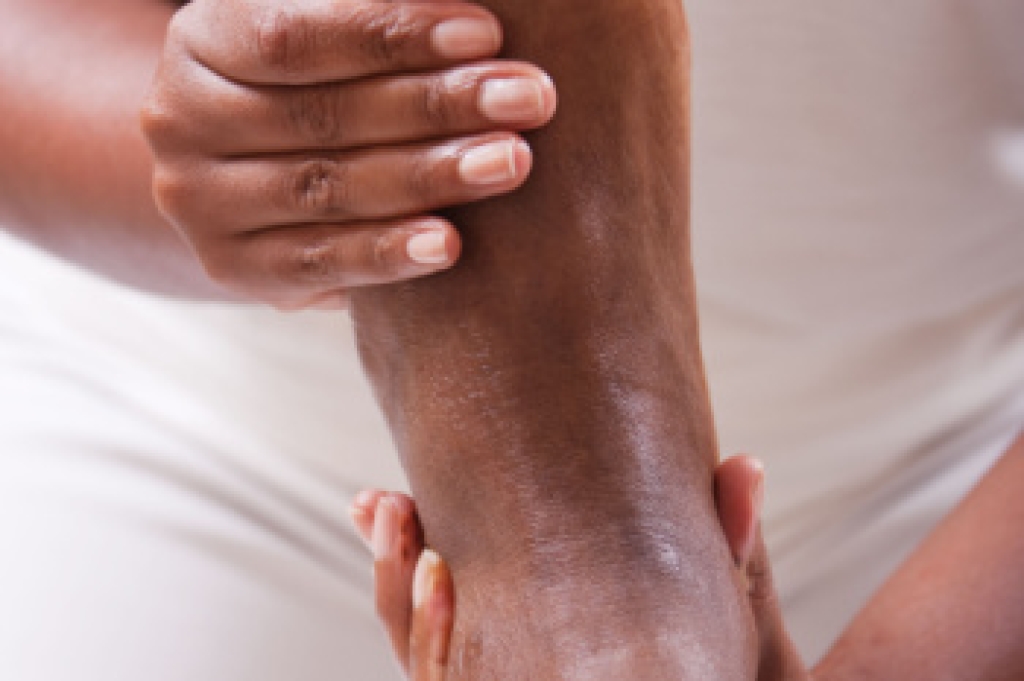Seasonal Foot Care

Foot care varies with the changing seasons to ensure comfort and prevent issues. In winter, cold weather can cause dry, cracked skin. Moisturize regularly and wear warm, moisture-wicking socks to keep feet dry and warm. In spring, as activity levels increase, choose supportive footwear to prevent overuse injuries. For summer, breathable shoes or sandals help prevent fungal infections, but ensure they provide adequate support and protection. It is beneficial to regularly apply sunscreen to exposed feet to prevent sunburn. In autumn, transition back to wearing closed-toe shoes gradually to avoid blisters and discomfort. Inspect shoes for wear and replace them as needed. If you experience persistent foot pain, swelling, changes in skin or nail health, or any foot abnormalities, it is suggested that you schedule an appointment with a chiropodist for treatment.
Caring for your feet is not just something done at the chiropodist’s office. Good foot care starts at home. If you would like to learn more about daily foot care practices, please consult with one of the chiropodists from The Footcare Centre. Our chiropodists can help you maintain the health of your lower limbs and your mobility.
There are many things that you can do at home to help care for your feet, including:
- Wearing shoes and socks that fit properly
- Washing the feet daily with soap and water
- Drying the feet thoroughly
- Applying moisturizer to the soles and heels of the feet
- Taking a walk and exercising the feet regularly
- Doing foot stretches and strengthening exercises
A chiropodist can help figure out a manageable foot care routine for you to keep your feet healthy. If you have any questions, please feel free to contact our office located in . We offer the newest diagnostic and treatment technologies for all your foot care needs.
Causes of Heel Pain
 Heel pain is a common issue that can feel like a sharp, stabbing sensation or a dull ache in the bottom of the heel. This discomfort often worsens with the first steps in the morning or after long periods of rest. Common causes include plantar fasciitis, Achilles tendonitis, heel spurs, and bursitis. Plantar fasciitis involves inflammation of the tissue connecting the heel bone to the toes, while Achilles tendinitis affects the tendon connecting the calf muscles to the heel. Heel spurs are bony growths on the underside of the heel bone, and bursitis is inflammation of the fluid-filled sacs cushioning the heel. Diagnosis typically involves a physical examination, patient history, and imaging tests like X-rays or MRI scans to identify the specific cause. Treatment varies based on the condition but may include rest, stretching exercises, and orthotic devices. Severe cases might require medication or surgery. If you have persistent heel pain, it is suggested that you schedule an appointment with a chiropodist for an accurate diagnosis and suggested treatment.
Heel pain is a common issue that can feel like a sharp, stabbing sensation or a dull ache in the bottom of the heel. This discomfort often worsens with the first steps in the morning or after long periods of rest. Common causes include plantar fasciitis, Achilles tendonitis, heel spurs, and bursitis. Plantar fasciitis involves inflammation of the tissue connecting the heel bone to the toes, while Achilles tendinitis affects the tendon connecting the calf muscles to the heel. Heel spurs are bony growths on the underside of the heel bone, and bursitis is inflammation of the fluid-filled sacs cushioning the heel. Diagnosis typically involves a physical examination, patient history, and imaging tests like X-rays or MRI scans to identify the specific cause. Treatment varies based on the condition but may include rest, stretching exercises, and orthotic devices. Severe cases might require medication or surgery. If you have persistent heel pain, it is suggested that you schedule an appointment with a chiropodist for an accurate diagnosis and suggested treatment.
Heel pain is a common problem that can be caused by a variety of injuries, medical conditions, and other factors. If you suffer from heel pain, please consult with one of the chiropodists from The Footcare Centre. Our chiropodists can help you maintain the health of your lower limbs and your mobility.
When it comes to heel pain, the exact location and type of pain are important to note. Some of the conditions that may cause heel pain include:
- Plantar fasciitis - An inflammation of the ligament that runs along the bottom of the foot; it causes a stabbing pain under the heel that is at its worst when taking your first few steps after a long rest and while standing on your tiptoes or climbing stairs
- Achilles tendonitis - An inflammation of the tendon in the back of the calf; it causes pain in the back of the heel that is at its worst after resting, as well as ankle and calf stiffness, swelling, and tenderness
- Bone spurs - Bony lumps on the back of the heel bones that cause sharp pain upon first standing up; the pain becomes dull and achy over time
- Heel fractures - A break or crack in the heel bone that causes pain, swelling, and difficulty walking
- Retrocalcaneal bursitis - Swelling of the small, fluid-filled sac at the back of the heel bone; it causes pain, swelling, redness, and warmth in the back of the heel
- Tarsal tunnel syndrome - Compression of the posterior tibial nerve which causes a pins and needles sensation in the heel, foot, and calf
Your chiropodist will be able to diagnose the underlying cause of your pain and prescribe the right treatments for you. If you have any questions, please feel free to contact our office located in . We offer the newest diagnostic and treatment technologies for all your foot care needs.
Understanding and Finding Relief For Cracked Heels

Cracked heels, characterized by dry, fissured skin on the heels and feet, are a common foot problem often caused by dryness and thickened skin. Symptoms include visible cracks, redness, itching, and pain, especially when standing or walking. Effective prevention involves regular moisturizing with emollients to keep the skin hydrated and supple. Exfoliation to remove dead skin cells and wearing properly fitting shoes also help prevent cracks. When cracks occur, relief focuses on moisturizing creams containing urea or salicylic acid to soften thickened skin and promote healing. Applying petroleum jelly or coconut oil overnight under socks can accelerate healing. For severe cases, a chiropodist can remove thickened skin and prescribe specialized creams. If you have developed cracked heels, it is suggested that you visit this type of healthcare professional who can effectively treat this condition.
Cracked heels, also known as heel fissures, can cause pain and discomfort. If your cracked heels are bothering you, please consult with one of the chiropodists from The Footcare Centre. Our chiropodists will assess your condition and provide you with quality foot and ankle treatment.
Dry, thickened skin around the rim of the heel is typically the first sign of cracked heels. While this condition is common and usually just a nuisance, some cases can be more severe. If left untreated and as more pressure is placed on the heel, the cracks become deeper and eventually walking and standing can be painful. These deep cracks or fissures can bleed and also become infected. Those with diabetes need to be especially careful as fissures could lead to diabetic foot ulcers.
Causes
Cracked heels can be the result of several different factors, including:
- Dry skin
- Taking long, hot showers or using harsh soaps
- Standing for long periods of time
- Walking barefoot
- Walking in shoes with an open back, such as sandals or flip flops
- Wearing shoes that do not fit properly
- Living in a cold or dry climate
- Certain skin conditions, such as eczema or psoriasis
Treatment
There are many at-home treatment remedies for cracked heels. Applying moisturizers to the heel can help hydrate the skin. Soaking your feet in warm water and exfoliating them with a loofah or pumice stone can help to buff away dead skin cells. If you are afflicted with cracked heels, it is recommended that you see a chiropodist for treatment.
Prevention
You can prevent cracked heels by:
- Avoiding standing in one position for prolonged periods of time
- Wearing well-fitted shoes with a closed back
- Washing your feet with gentle soaps and lukewarm water
- Moisturizing the feet daily
If you have any questions, please feel free to contact our office located in . We offer the newest diagnostic and treatment technologies for all your foot care needs.


